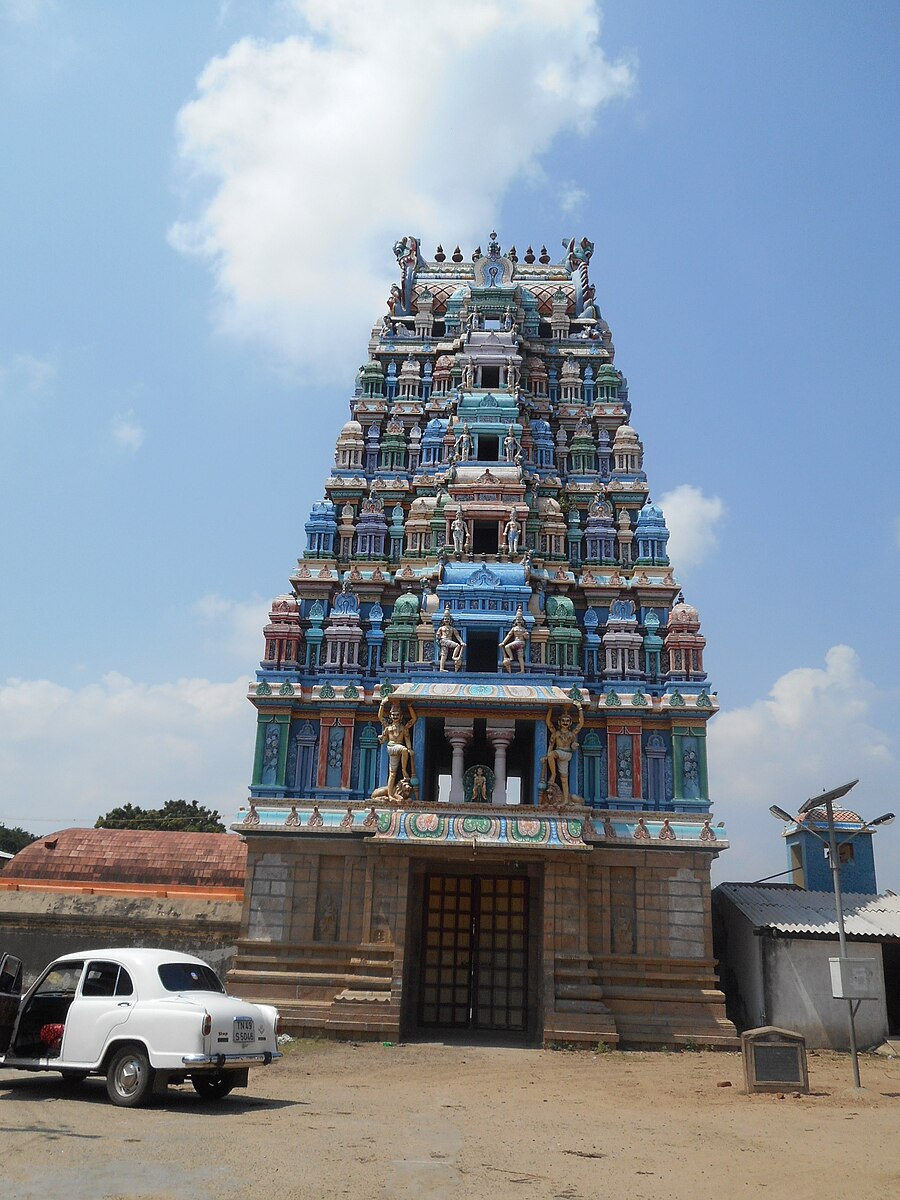Country India Location Kodikkarai Architectural styles Dravidian architecture Architectural style Dravidian architecture | State Tamil Nadu Primary deity Kuzhagar(Shiva) District Nagapattinam | |
 | ||
Similar Agastheeswar Temple, Korukkai Veeratteswarar Temple, Ona Kantheeswarar Temple, Viratteswara Temple - Vazhuvur, Mahendrapalli Tirumeni Azhagar | ||
Kuzhagar Temple or Kodi Kuzhagar Temple (also called Amrithakadeswarar Temple) is a Hindu temple dedicated to Shiva, located in the town of Kodikkarai in Tamil Nadu, India. Kuzhagar is revered in the 7th century Tamil Saiva canonical work, the Tevaram, written by Tamil saint poets known as the nayanars and classified as Paadal Petra Sthalam.
Contents
Kuzhagar temple is originally believed to have been built by the Cholas and it has several inscriptions dating back to the Chola period. The temple has six daily rituals at various times from 5:30 a.m. to 8 p.m., and three yearly festivals on its calendar. The annual Brahmotsavam (prime festival) is attended by thousands of devotees from far and near. The temple is maintained and administered by the Hindu Religious and Endowment Board of the Government of Tamil Nadu.
Etymology and legend
The town Kodikkarai is named after Kuzhagar, the presiding deity of the Kuzhagar Temple, a Hindu temple dedicated to Shiva. The 7th century Saiva canonical work Tevaram by Sundarar and Tirugnanasambandar mentions the place as Kuzhagar Kovil.
History
The recorded history of Kodikkarai is found from the inscriptions in Kuzhagar Temple and Vedaranyeswarar Temple. The inscriptions date from the reign of Aditya Chola (871–907 CE), Rajaraja Chola I (985–1014 CE), Rajendra Chola I (1012–1044 CE) and Kulothunga Chola I (1070–1120 CE) indicating various grants to the temple. An inscription dating back to Parantaka Chola mentions the gift of 90 sheep by a merchant to the temple for the maintenance of a perpetual lamp.
The region of Kodikkarai along with Vedaranyam continued to be a part of the Chola Empire and the Chola region emerged as a centre of Saivism during the reign of Kulothunga Chola I (1070–1120 CE). After the fall of Cholas during the reign of Rajendra Chola II in the 13th century CE, the erstwhile Chola region was caught under a power struggle between Pandyas and Hoysalas. The royal patronage continued to the temple during the rule of the Nayaks. The Negapatam region (modern day Nagapattinam district) was briefly captured by French troops led by Lally (1702–66 CE) in 1759 CE. The Tanjore district was annexed by British after the French failed to subdue the king of Tanjore. In modern times, the temple is maintained and administered by the Hindu Religious and Endowment Board of the Government of Tamil Nadu.
The temple
Kuzhagar temple complex has three prakarams (outer courtyard) and a five-tiered rajagopuram (gateway tower). The central shrine faces east and holds the image of Kuzhagar (Shiva) in the form of lingam made of granite. The granite images of the deities Ganesha (son of Shiva and god of wisdom), Murugan (son of Shiva and god of war), Nandi (the bull and vehicle of Shiva) and Navagraha (nine planetary deities) are located in the hall leading to the sanctum. As in other Shiva temples of Tamil Nadu, the first precinct or the walls around the sanctum of Kuzhagar has images of Dakshinamurthy (Shiva as the Teacher), Durga (warrior-goddess) and Chandikeswarar (a saint and devotee of Shiva). The second precinct is surrounded by granite walls.
Worship and religious practices
The temple priests perform the puja (rituals) during festivals and on a daily basis. Like other Shiva temples of Tamil Nadu, the priests belong to the Shaiva community, a Brahmin sub-caste. The temple rituals are performed six times a day; Ushathkalam at 5:30 a.m., Kalasanthi at 8:00 a.m., Uchikalam at 10:00 a.m., Sayarakshai at 5:00 p.m., Irandamkalam at 7:00 p.m. and Ardha Jamam at 8:00 p.m. Each ritual comprises four steps: abhisheka (sacred bath), alangaram (decoration), naivethanam (food offering) and deepa aradanai (waving of lamps) for both Kuzhagar and Thdangani Amman. The worship is held amidst music with nagaswaram (pipe instrument) and tavil (percussion instrument), religious instructions in the Vedas (sacred texts) read by priests and prostration by worshippers in front of the temple mast. There are weekly rituals like somavaram (Monday) and sukravaram (Friday), fortnightly rituals like pradosham and monthly festivals like amavasai (new moon day), kiruthigai, pournami (full moon day) and sathurthi. The ten-day Vaikasi visagam in during the Tamil month of Vaikasi (May–June) and six-day Sashti are the major festivals celebrated in the temple.
